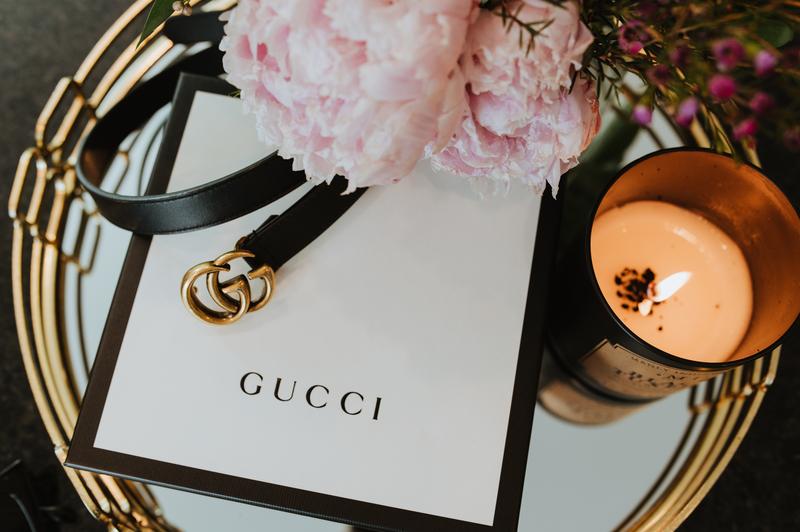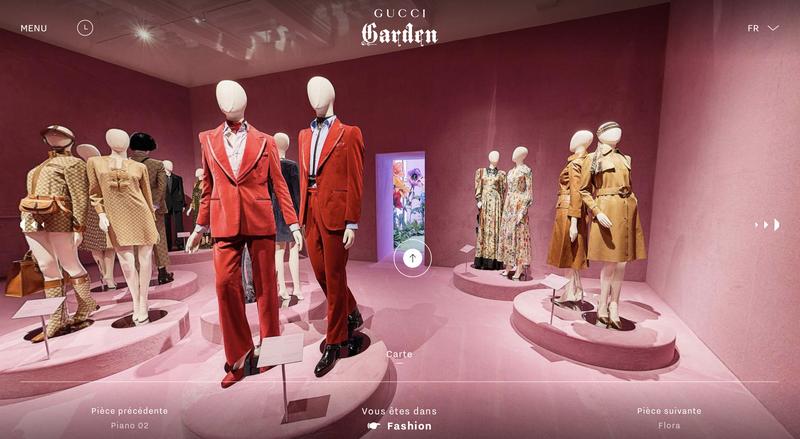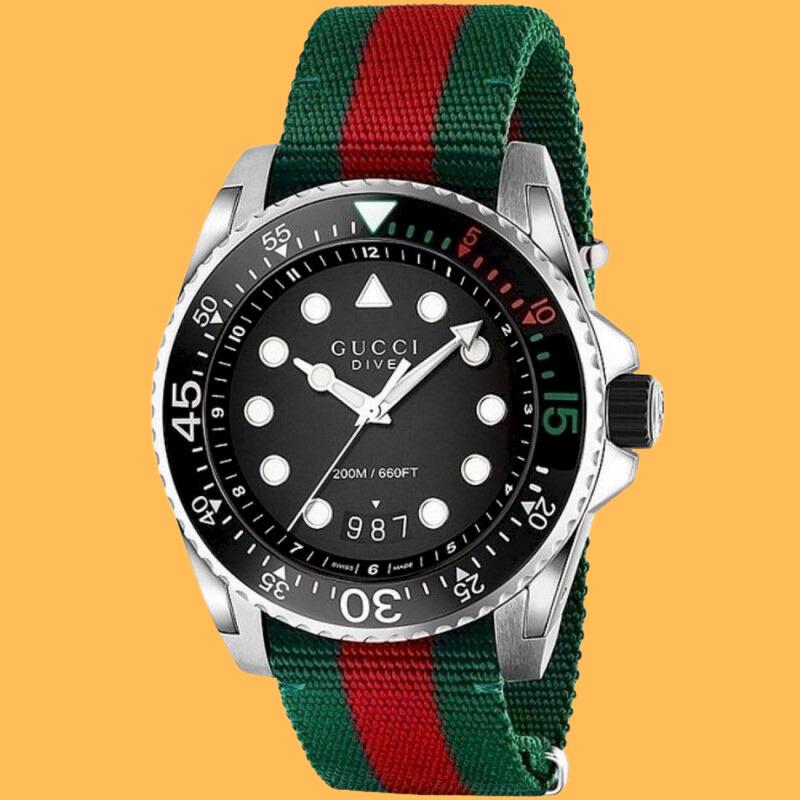
Since its foundation by Guccio Gucci in Florence in 1921, Gucci has become an indispensable luxury brand marking the history of fashion with its innovative and quality creations. Its constant adaptation under the successive creative directions of notable figures such as Tom Ford, Frida Giannini, Alessandro Michele and most recently Sabato de Sarno, allows it to remain a star of global fashion.
Gucci’s beginnings in Italy
Guccio Gucci: the ambition of a Florentine
Guccio Gucci was born in 1881 in Florence, a city known for the richness of its artistic and cultural heritage. Fascinated by the elegance of the luggage and travel accessories he saw while working as a bellboy at the Savoy Hotel in London, Gucci was inspired to create his own line of high-quality leather products.
In 1921, he opened his first store in Florence, selling luxury leather goods. This is where the Gucci saga begins…
Innovation and creativity: the Gucci Bamboo bag and Gucci loafers
In the 1930s, due to a leather embargo, Gucci was forced to look for alternative materials. This is when the Gucci Bamboo bag was born, an accessory that has become iconic for the brand. Designed with bamboo imported from Japan, it quickly became a must-have for women around the world.
At the same time, Gucci also launched the Gucci loafers, revolutionary for the time. Made from soft leather, these loafers were both comfortable and elegant: ideal for the modern man.
Even today, the Gucci Loafers remain a typical piece of the brand. Gucci also revisited the Chukka boots, originally designed for Polo players in the 1950s.

International expansion: from the United States to France
Expansion abroad: from 5th Avenue to Place Vendôme
In the 1950s, Aldo, Vasco and Rodolfo, three of the six Gucci children, took control of the company and expanded it internationally. The first American store opened in 1953 on 5th Avenue in New York, followed by Miami and London. In 1963, Gucci also entered the French market with a store near Place Vendôme in Paris.
Collaborations and notable creations: Gucci Flora, the Gucci 1973 bag and the GG logo
Throughout the 1960s and 1970s, Gucci introduced several iconic items:
- The Gucci Flora silk scarf, specially designed for the Princess of Monaco Grace Kelly, quickly became a distinctive sign of feminine elegance;
- The Gucci 1973 bag, which is now recognized as a classic of the brand;
- The legendary GG logo of Gucci, representing the intertwined initials of founder Guccio Gucci, was also launched during this period, reinforcing the brand’s visual identity.

Changes in direction and brand revival
End of the family era with the assassination of Maurizio Gucci by his wife
The murder of Maurizio Gucci in 1995 ended the Gucci family’s governance. His ex-wife and mother of his two daughters, Patrizia Reggiani, was convicted of this crime despite her denials. This tragic act revealed deep family disagreements and power struggles within the company. Indeed, Maurizio Gucci had already sold a good part of his shares to Investcorp, an investment company based in Bahrain.
If you want to know more, we recommend the film House of Gucci. Directed by award-winning filmmaker Ridley Scott, it immerses us in this intriguing chapter of fashion history, with Lady Gaga delivering a fascinating performance as Patrizia Reggiani alongside a remarkable cast with Adam Driver as Maurizio Gucci, Al Pacino, Jared Leto and Salma Hayek.
Tom Ford and the rebirth of Gucci
The arrival of Texan Tom Ford at Gucci in 1994 breathed new life into the brand. Promoted to creative director, Ford introduced a bold style with Halston-style velvet, skinny satin shirts and metallic patent boots with an automotive finish. The Fall-Winter 1995 collection, featuring velvet, became a landmark moment in the brand’s history.
Ford enlisted journalist and stylist Carine Roitfeld and photographer Mario Testino to launch a series of new advertising campaigns, increasing Gucci’s sales by 90% between 1995 and 1996.
In a wave of porno chic revival, Ford and his team delved into the house’s archives to create sensual white dresses with provocative cutouts, which were an immediate success. Gucci also launched daring limited edition products, such as silver handcuffs and a thong.
In 1999, after transforming a couture house on the brink of insolvency into a company valued at over $4 billion, Ford was also appointed creative director of Yves Saint Laurent, acquired by Gucci. Despite hostility from Yves Saint Laurent himself, Ford managed to breathe new life into the YSL brand. In 2004, he left Gucci, leaving behind a luxury empire valued at $10 billion.

Kering era
Gucci’s acquisition by Kering
In 1999, the French group Pinault-Printemps-Redoute, now known as Kering, acquired a majority stake in Gucci, thus consolidating its portfolio of luxury brands. With Kering, Gucci was able to grow and diversify even more, while maintaining its commitment to quality and luxury.

Post-Tom Ford: The Frida Giannini Turn and Others
Following the departure of Tom Ford, Gucci renewed its creative essence thanks to the arrival of John Ray, Alessandra Facchinetti, and Frida Giannini, all former collaborators of Ford.
Facchinetti, promoted to creative director of women’s clothing in 2004, managed to leave her mark for two seasons before leaving the scene.
John Ray also led men’s fashion for three years.
But it was Frida Giannini, former head of Gucci accessories, who took over the creative direction of the brand in 2006. Imbued with Ford’s style, Giannini subtly transformed her predecessor’s porno chic audacity, evolving the brand from sultry to sensual. She also managed to redefine classics, with striking creations like the New Bamboo and New Jackie handbags.
Meanwhile, Patrizio di Marco, appointed CEO of Gucci in 2008, managed to adapt the company to the post-2008 crisis, favoring a more balanced offering with more mid-range products.

Museo Gucci and Gucci Garden
Gucci’s creativity knows no bounds. The jewel of this quest for innovation is undoubtedly the opening of the Gucci museum in Florence in 2011 to celebrate the 90th anniversary. This museum, now named Gucci Garden, is now just a click away: you can visit the Gucci museum virtually for an immersion in the heart of the brand’s elegance.

Alessandro Michele: Gucci’s Renewal
In January 2015, Alessandro Michele was appointed interim creative director of Gucci by Marco Bizzarri, entrusting him with the task of reinventing the brand. Michele managed to introduce a non-conformist and intellectual identity, while reinventing Gucci accessories to boost sales. He created iconic products like the Dionysus handbag and reintroduced Gucci classics, focusing on a sophisticated and androgynous image.

Michele played a crucial role in transforming Gucci into a post-gender brand, incorporating innovative design elements and feminist slogans such as: “My body my choice”.
Infusing Gucci with a Renaissance touch, Michele revolutionized Gucci’s design headquarters in Rome, the Palazzo Alberini-Cicciaporci; he replaced contemporary furniture with antiques and opted for historically rich locations for his fashion shows.
In 2016, he honored former creative director Tom Ford at the Gucci museum and actively participated in the preservation of items in the Gucci bookstore in New York.
In 2019, the Gucci Beauty collection was relaunched under his direction. In addition, the brand’s first collection of fine jewelry was launched.
However, in November 2022, Alessandro Michele suddenly left his position as artistic director at Gucci, as the brand faced a decline in sales. Our colleagues at Le Monde suggest that Gucci’s continued exuberance, although once applauded, may have ended up tiring, especially compared to the classicism of competitors who are thriving, particularly in the post-Covid context.

Gucci Today: The Future with Sabato de Sarno
Kering surprised everyone by announcing in January 2023 the appointment of the relatively unknown Sabato de Sarno. The 39-year-old Italian has nevertheless worked for Prada, Dolce & Gabbana, and Valentino.
Scheduled to present his first collection for Gucci at Milan Fashion Week in September, he represents a promising new era for the luxury house. Under his leadership, Gucci seeks to value its rich heritage while inaugurating a new chapter in its history…

Iconic Products that Shaped Gucci’s History
Gucci Perfumes: An Ode to Elegance and Sophistication
Gucci entered the perfume industry in the 1970s with the release of its first perfume, Gucci No. 1. Since then, the house has launched numerous perfumes, such as Gucci Guilty and Gucci Bloom, which continue to seduce enthusiasts worldwide.

Gucci Watches: Technique and Luxury in Watchmaking
Gucci manufactures luxury watches assembled in its Swiss watchmaking factory. To do this, the brand uses tinted steel (PVD), rubber, wood, and leather from Italy. Some watch creations are even embellished with brand-specific details, including the green-red-green stripe or the famous Gucci monogram pattern.

Gucci and Fashion Accessories: Everyday Essentials
Beyond its ready-to-wear collections, Gucci offers a wide range of accessories, including sunglasses, jewelry, and scarves. These accessories have become must-have items for those looking to add a touch of luxury to their wardrobe.
Notable Collaborations of Gucci
Gucci and the Cadillac Seville: A Legendary Collaboration
In 1979, Gucci collaborated with Cadillac to produce the Cadillac Seville Gucci Edition, a luxury car adorned with Gucci details. This unprecedented collaboration marked Gucci’s history and established the brand as a key player in the luxury industry.
Gucci and Adidas
In 2022, an exceptional collaboration was born between Adidas and Gucci, designed by the visionary Alessandro Michele. This collection, blending luxury and sport, draws inspiration from the 1970s / 1980s and is characterized by bold co-branding combining the Gucci monogram and the three stripes of Adidas. In 2023, Sabato de Sarno took over, continuing the momentum of this remarkable alliance.
Gucci and its Commitment to Sustainability and Social Responsibility
Today, Gucci is committed to a sustainability and social responsibility approach. With the support of Kering, Gucci has implemented initiatives to reduce its environmental impact and promote ethics and inclusion.
Gucci, a Name Inseparable from Luxury
With over a century of existence, Gucci is more than a brand: it is a symbol of luxury, quality, and creativity. Whether with its iconic bags, captivating perfumes, or bold collaborations, Gucci continues to redefine what luxury means in the world.
Today, as the brand turns towards the future with a focus on sustainability and social responsibility, one thing remains certain: Gucci has found its place in the third millennium without denying its centennial heritage.